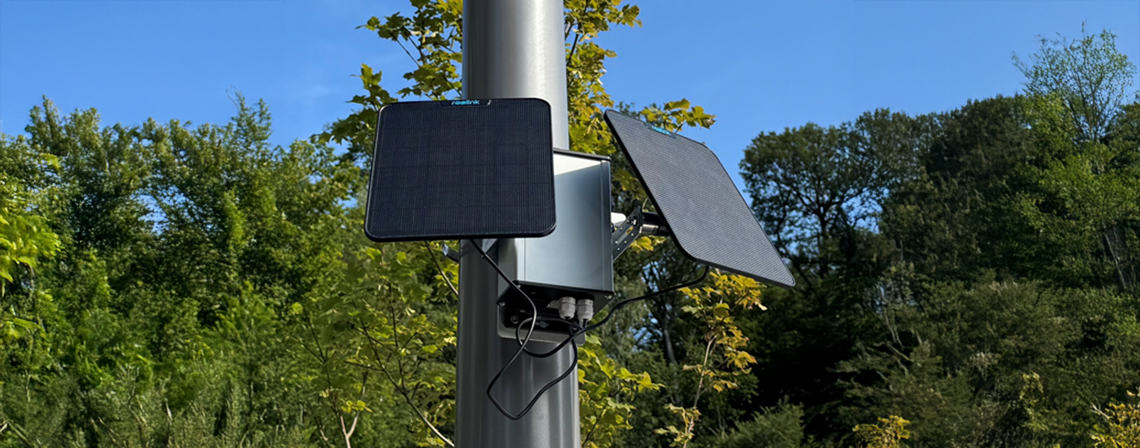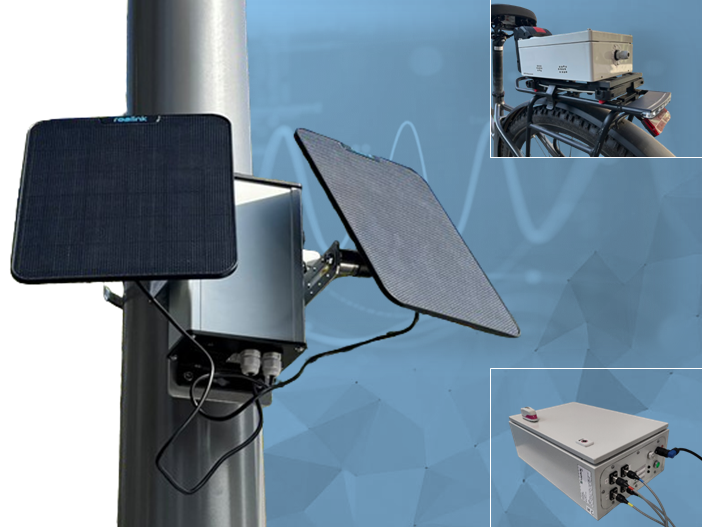In several projects, our team developed multimodal sensor platforms for measuring various parameters in the surrounding environment and evaluating processes. The design of these platforms depends on the specific case study and the measurement method.
Stationary platforms enable continuous monitoring and detection of long-term variations in the measurement parameters. Outdoor stationary platforms are designed to be self-sufficient, using an energy-efficient communication module (LoRaWAN). These platforms do not require an external power source; instead, solar energy is stored in built-in battery units, allowing high flexibility in the installation process. Indoor stationary platforms are used for applications requiring large data volumes and high sampling rates, such as recording audio to monitor processes and objects in various sectors, including urban environments, agriculture, and animal welfare.
For short-term measurements, partially stationary and portable variants are designed to evaluate the local distribution of measurement values and link measured parameters such as air quality and noise in urban environments, to their geographical locations or monitor transportation processes.
The data recorded ranges from environmental data such as temperature, humidity, UV index or air quality to external influences such as acceleration and noise from surroundings. In some platforms, a recording of the surrounding sounds, in addition to image and video, is also collected.
Depending on the case study, all recorded data can be transmitted and stored in a variety of ways. Individual numerical data points are transmitted directly to a database via MQTT, while broadband network connections, powerful servers and transmission protocols such as WebDAV are used for large volumes of data such as audio and image recordings.
Several filtering and analysis techniques are applied to the collected data for evaluation of the parameters and processes in the monitored location. This includes intelligent evaluation, sensor fusion and deep learning methods to develop stationary and dynamic models of the case under investigation.
 Fraunhofer Institute for Nondestructive Testing IZFP
Fraunhofer Institute for Nondestructive Testing IZFP 
